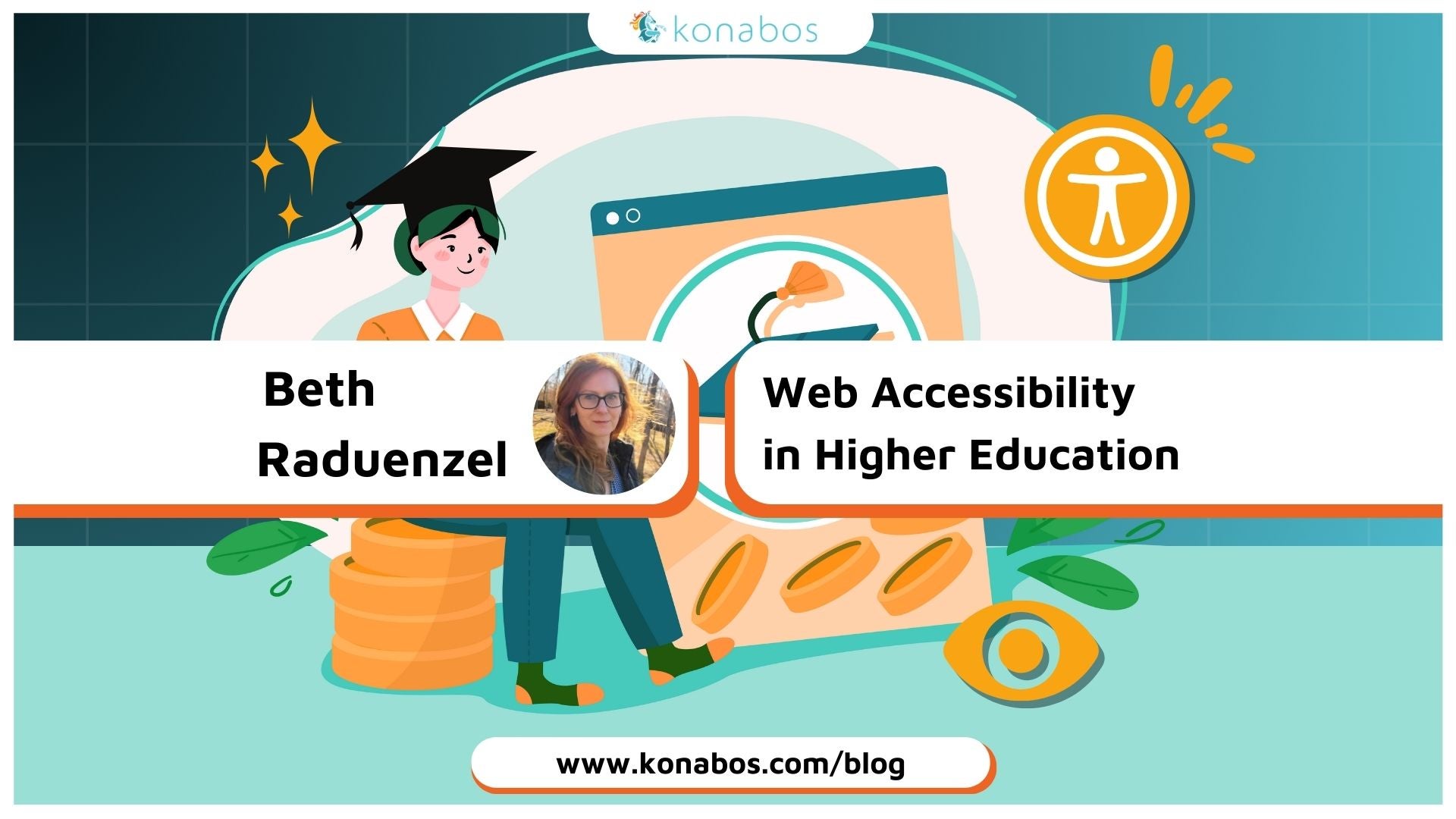Web Accessibility in Higher Education
Beth Raduenzel -
28 Oct 2024
It is well known in the higher education sector that all colleges and universities must adhere to the Americans with Disabilities Act (ADA), but were you aware that the ADA also applies to college and university websites?
Web accessibility ensures that digital content, including websites, can be used by individuals with disabilities such as visual, hearing, cognitive or motor disabilities. Colleges and universities rely on their websites for everything from admissions and course registration to online classes. Ensuring accessibility to these digital environments is not just a legal obligation—it’s also crucial for creating an inclusive and equitable experience for all students.
Legal Requirements and Compliance
The ADA, along with Section 508 of the Rehabilitation Act mandate that institutions provide equal access to individuals with disabilities. These laws apply to both physical campuses and digital content. Universities that fail to comply can face lawsuits, government investigations, and reputational damage. A 2020 report revealed that higher education institutions were one of the top industries targeted by accessibility lawsuits, emphasizing the growing legal pressure for compliance.
The Importance of WCAG 2.1 Guidelines
The Web Content Accessibility Guidelines (WCAG) 2.1, published by the World Wide Web Consortium (W3C), is the standard that institutions follow to ensure web accessibility. WCAG offers comprehensive guidance on making web content perceivable, operable, understandable, and robust for individuals with disabilities. There are 3 levels of WCAG compliance ranging from A (the easiest to achieve) to AAA (the most stringent). Meeting compliance level AA is considered best practice for higher education institutions.
The Scope of the Issue
Statistics show that web accessibility remains a widespread issue in higher education. A study conducted by the EDUCAUSE Center for Analysis and Research (ECAR) found that:
68% of colleges and universities had not fully implemented web accessibility initiatives as of 2021.
And although 71% of campus leaders viewed digital accessibility as "very important," resource limitations and lack of institutional buy-in were barriers.
Only 20% of institutions were confident that they met the WCAG AA compliance level.
These numbers reveal a considerable gap between awareness and implementation, despite the fact that around 19% of undergraduate students in the U.S. report having a disability, according to the National Center for Education Statistics (NCES).
The Benefits of Accessibility for All
While accessibility is a legal requirement, its benefits extend far beyond compliance. Accessible websites enhance user experience for all individuals, including those without disabilities. Features like captions for videos, better navigation structures, and mobile-friendly designs can improve the usability of websites for every student and faculty member.
In addition, embracing accessibility can improve SEO, reduce bounce rates, and increase engagement by making content easier to find and interact with. For institutions that rely on online course offerings or hybrid learning models, accessibility is key to maintaining student retention and fostering a more diverse and inclusive student body.
Taking Action
Implementing web accessibility requires a multi-faceted approach. Institutions should consider conducting regular audits of their digital platforms, training staff on accessibility best practices, and allocating resources to web accessibility projects. Collaborative efforts across IT, web development, and instructional design teams are crucial for creating a sustainable and compliant web presence.
By addressing web accessibility, colleges and universities not only fulfill their legal obligations but also create a more inclusive and effective learning environment for all students.
Protect your business and ensure accessibility for all— today to make your website ADA-compliant!

Beth Raduenzel
Working for large Fortune 100 and 500 companies and small tech startups has given Beth a range of rarely attained experience. Beth has enjoyed improving user experiences across B2B, B2C, and SaaS Enterprise apps, whether as part of a large design team or wearing many hats as the sole designer, researcher, and editor at small startups.
Beth is the author of two published articles on web accessibility and is currently working on a tactile children’s book for the blind.



Share on social media